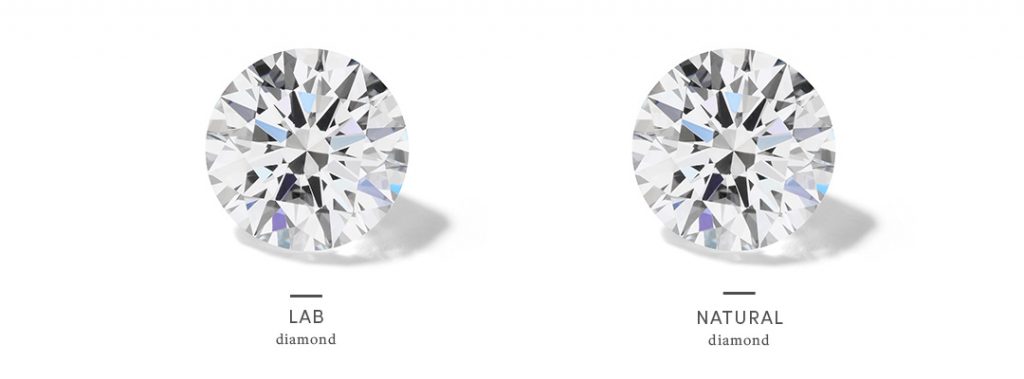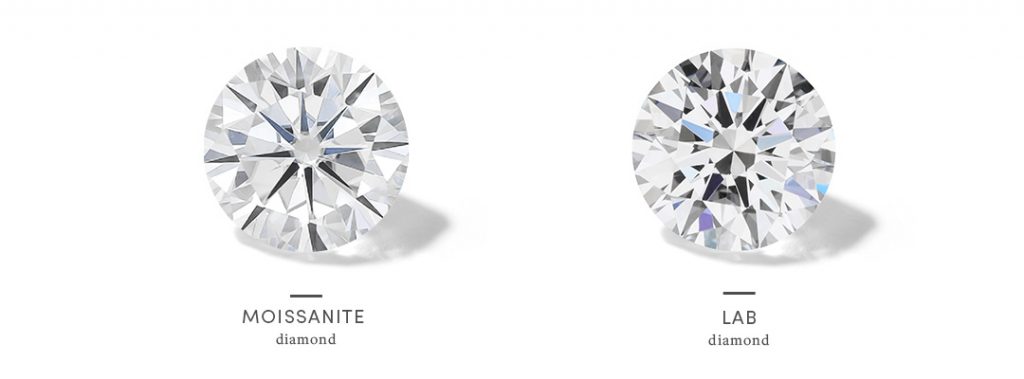Moissanite Vs. Cubic Zirconia

If you're getting engaged on a budget, it's easy to get discouraged when looking at mined or lab grown diamond rings. After all, the prices can be very high and the pressure is on to present a ring that shows how much you love your partner. However, sticking to your budget is important because you shouldn't risk your future by being in too much debt. Fortunately, there are some great options available for a gemstone engagement or wedding ring on a budget. Read on to know more about diamond alternatives, specifically moissanite vs cubic zirconia.
TABLE OF CONTENTS
'Colorless' Mined Diamond Alternatives
While some couples may choose colored gemstone rings, others prefer a white stone. White stones, especially natural colorless diamonds, have been the classic and go-to choice for many. However, with time comes more opportunities. In this category, there are four main options: mined diamonds, lab diamonds, moissanite, and cubic zirconia. Each of these has distinct qualities, availability, and price points.
Moissanite
Moissanite is a crystalline substance called silicon carbide. This means that, like diamonds, it contains carbon. However, carbon isn't pure. Dr. Henri Moissan discovered the mineral in the 1890s while exploring Diablo Canyon, Arizona.
In nature, moissanite is a rare mineral that's only found in meteorites. Starting in the 1990s the jewelry industry learned how to create jewelry-quality crystals that could be fashioned into moissanite rings. Due to its hardness of 9.25, Moissanite is almost as durable for everyday wear as diamonds, and at a fraction of the cost!
Is Moissanite Considered a Diamond?
However, you'll never be able to say moissanite is a “real” diamond. By definition, natural and lab diamonds are pure carbon. Whereas moissanite is composed of silicon carbide. Moissanite is, however, a “real” mineral that can be just as beautiful.
Cubic Zirconia
Overall, cubic zirconia has been on the market much longer than moissanite, with jewelry appearing in the 1970s. Also discovered as a very rare natural gemstone in the 1890s, it is chemically known as zirconium dioxide and has a hardness of 8.5.
Is Cubic Zirconia a Real Diamond?
Cubic zirconia earrings have been hugely popular over the last few decades so that most women have at least one pair. However, cubic zirconia engagement rings are less common.
Although it is not usually mined from the ground, cubic zirconia is still considered a mineral and can be thought of as a “real” substance. However, in spite of its beauty, this mineral still isn't a real diamond. Its properties aren't the same, and neither is its chemical composition. From a price standpoint, cubic zirconia is almost worthless. Any kind of precious metal set will usually be worth more than the stone. However, that does make it a nice budget option for a cheap engagement ring or a wedding ring.
Lab Created Diamonds
As the newest entrant to the world of mined diamond alternatives, we noticed less market awareness of lab-created diamonds. However, these are unique from all the other options, because lab created diamonds are real diamonds. Generally, they are like mined ones in almost every way (with exception to their origin). They are made of pure carbon and have a hardness of 10.
With identical chemical and physical elements, optical properties are also the same. You can't say of the previous two gemstones/"diamond" engagement ring options. Other than the origin, the other difference between lab made diamonds and their mined counterparts are the fact that lab diamonds will always colorless. Unless the lab adds something to the mixture, no impurities are around to change the color of a lab-created diamond. Furthermore, lab diamonds with flaws generally aren't sold as jewelry.

At the end of the day, lab-created diamonds are real diamonds, they just have a different origin. They are also graded the same way as natural diamonds, with the difference that the gem report lists the gem as lab-created. Best of all, lab-created diamonds are much less expensive, allowing for a savings of around 60% (also found on your website).
Colorless Gemstone Comparisons
When choosing between the options for unique gemstone rings, it's important to understand the differences in stones. For that reason, here are some comparisons.
Moissanite vs Cubic Zirconia

As mentioned above, moissanite is harder than cubic zirconia, with hardness scores of 9.25 versus 8.5, respectively. To put this in perspective, sapphire and ruby ranks 9 on the Mohs Hardness Scale, placing it between these other gemstones. In practical terms, this means that moissanite is more resistant to scratches than cubic zirconia, sapphire, and ruby. This is a major reason to choose moissanite engagement rings over cubic zirconia engagement rings. On the other hand, cubic zirconia is significantly less expensive.
Moissanite vs Lab Diamond
When choosing between a lab diamond engagement ring and one made with moissanite, here are some things to consider.
- First, there is a tiny difference in hardness: 9.5 for moissanite and 10 for lab diamond on the Mohs Scale. As a result, lab created diamond rings will wear better and longer, but the difference isn't as big as other alternatives.
- Also, Moissanite can look a little bit different in certain types of light, though most people won't notice.
- Between these two options, the main difference is that you either have a “real” diamond or you don't.
- Moissanite is still cheaper than a lab diamond, however, making lab diamond rings the most expensive between moissanite and cubiz zirconia.

Colorless Gemstone Buying Tips
Still, need some help deciding? Our best piece of advice is simple: pick something you like within your budget. Then, consider what option best fits your needs. Do you need something durable, but you don't have much money? Consider moissanite. Would your sweetheart prefer a “real” diamond but you want more value? Think about a lab grown diamond. Need something really cheap? Cubic zirconia might be your best bet.
Finally, you can always consider a colored gemstone ring. At With Clarity, we have eight conflict free options besides colorless diamonds: black diamonds, ruby, blue sapphire, London blue topaz, aquamarine, peridot, and amethyst. For metals, we offer rose, white, and yellow gold in 14 or 18 kt, plus platinum. Contact us, and we'll help you pick something that fits her style and your budget.










